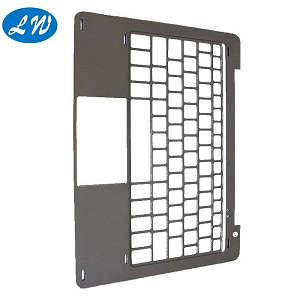Exploring the Key Steps in Keyboard Machining: CNC Shell Machining Design and Execution
In the realm of modern computing, keyboards serve as indispensable tools for human-computer interaction. Behind their sleek and ergonomic designs lie intricate manufacturing processes, particularly in the realm of shell machining and CNC (Computer Numerical Control) machining. This article delves into the essential steps involved in the machining process for keyboard shells, highlighting the design considerations, CNC machining techniques, and the overall workflow.

Design Phase
The keyboard machining process initiates with meticulous design planning. Designers conceptualize the shell's structure, form factor, and aesthetics to ensure both functionality and visual appeal. Factors such as key layout, keycap profile, and overall ergonomics are carefully considered during this phase. Advanced CAD (Computer-Aided Design) software aids in translating these concepts into detailed digital models, allowing for precise measurements and adjustments.
Material Selection
Once the design is finalized, the appropriate material for the keyboard shell is chosen. Common materials include aluminum alloys, plastics, and composite materials. Factors such as durability, weight, and cost influence material selection. Aluminum alloys are favored for their lightweight yet robust properties, making them ideal for premium keyboards.
CNC Machining Programming
With the design and material chosen, CNC programming takes center stage. CNC machines are programmed to precisely cut and shape the raw material according to the digital design specifications. CAM (Computer-Aided Manufacturing) software generates toolpaths and machining instructions, guiding the CNC machine through the intricate milling and drilling processes. Parameters such as cutting speeds, tool paths, and tool changes are meticulously defined to optimize efficiency and accuracy.
Raw Material Preparation
Before machining commences, the raw material undergoes preparatory steps to ensure uniformity and suitability for CNC processing. This may involve cutting the material into manageable sizes, surface preparation, and securing it onto the CNC machine bed using clamps or fixtures.
CNC Machining Execution
With the CNC machine programmed and the raw material prepared, the machining process begins. Precision milling and drilling operations sculpt the keyboard shell from the raw material block, following the digital design specifications with utmost accuracy. High-speed spindle rotations and multi-axis movement enable intricate detailing and complex geometries to be achieved with precision.
Finishing Touches
Once the primary machining is complete, the keyboard shell undergoes finishing processes to refine its surface texture and appearance. This may involve deburring to remove sharp edges, sanding to achieve smooth surfaces, and polishing for a glossy finish. Anodizing or painting processes may also be employed to enhance durability and aesthetic appeal, providing protection against corrosion and wear.
Quality Assurance
Throughout the machining process, quality control measures are implemented to ensure the dimensional accuracy and structural integrity of the keyboard shell. Metrology tools such as CMMs (Coordinate Measuring Machines) and precision gauges are used to verify critical dimensions and tolerances. Visual inspections also play a crucial role in identifying any surface defects or imperfections that may affect the final product's quality.
In conclusion, keyboard machining is a sophisticated process that combines advanced design principles with precision CNC machining techniques. From the initial design phase to CNC programming, machining execution, and finishing touches, each step contributes to the creation of high-quality keyboard shells that meet the demands of modern computing. By embracing cutting-edge technology and meticulous craftsmanship, manufacturers ensure that every keyboard produced delivers optimal performance and user satisfaction.


